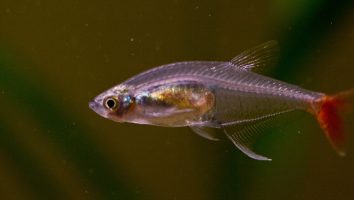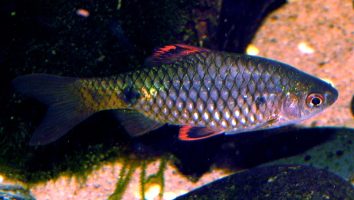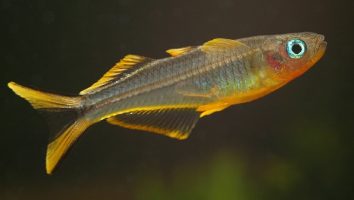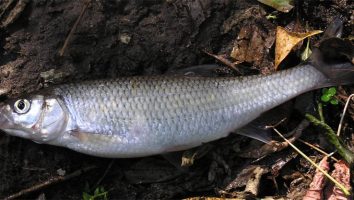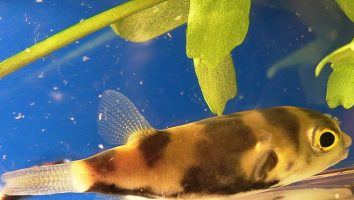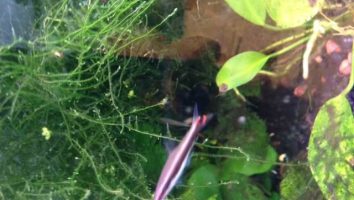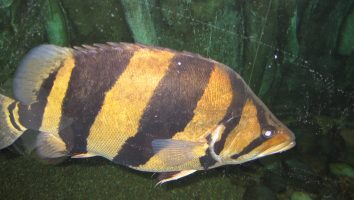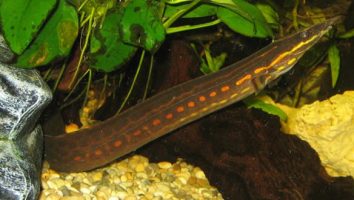The tinfoil barb is a freshwater fish that is often overlooked by beginner fishkeepers.
This is a shame because they’re actually a really great fish for beginners! They’re very hardy and can tolerate a wide range of water conditions.
They’re also relatively peaceful (for a barb) and make a great addition to a community tank.
In this guide, we’ll teach you everything you need to know about tinfoil barb care. tank mates, size, diet, and more!
Table of contents
Species overview
Tinfoil barbs (Barbus schwanefeldii) are a freshwater fish that is native to Southeast Asia. In the wild, they can be found in Vietnam, Laos, Cambodia, and Thailand.
They prefer slow-moving waters with a lot of vegetation. This could be in the form of rivers, streams, or even ponds.
Tinfoil barbs are a schooling fish, which means they like to live in groups. In the wild, these groups can number in the hundreds or even thousands! In captivity, a group of 6-8 is probably the minimum you’ll want to aim for.
This fish is a bit of a problem child. They are known to be quite aggressive, and they have a reputation for being nippy. They are also known to uproot plants, so if you have a heavily planted tank you might want to reconsider getting tinfoil barbs.
Appearance
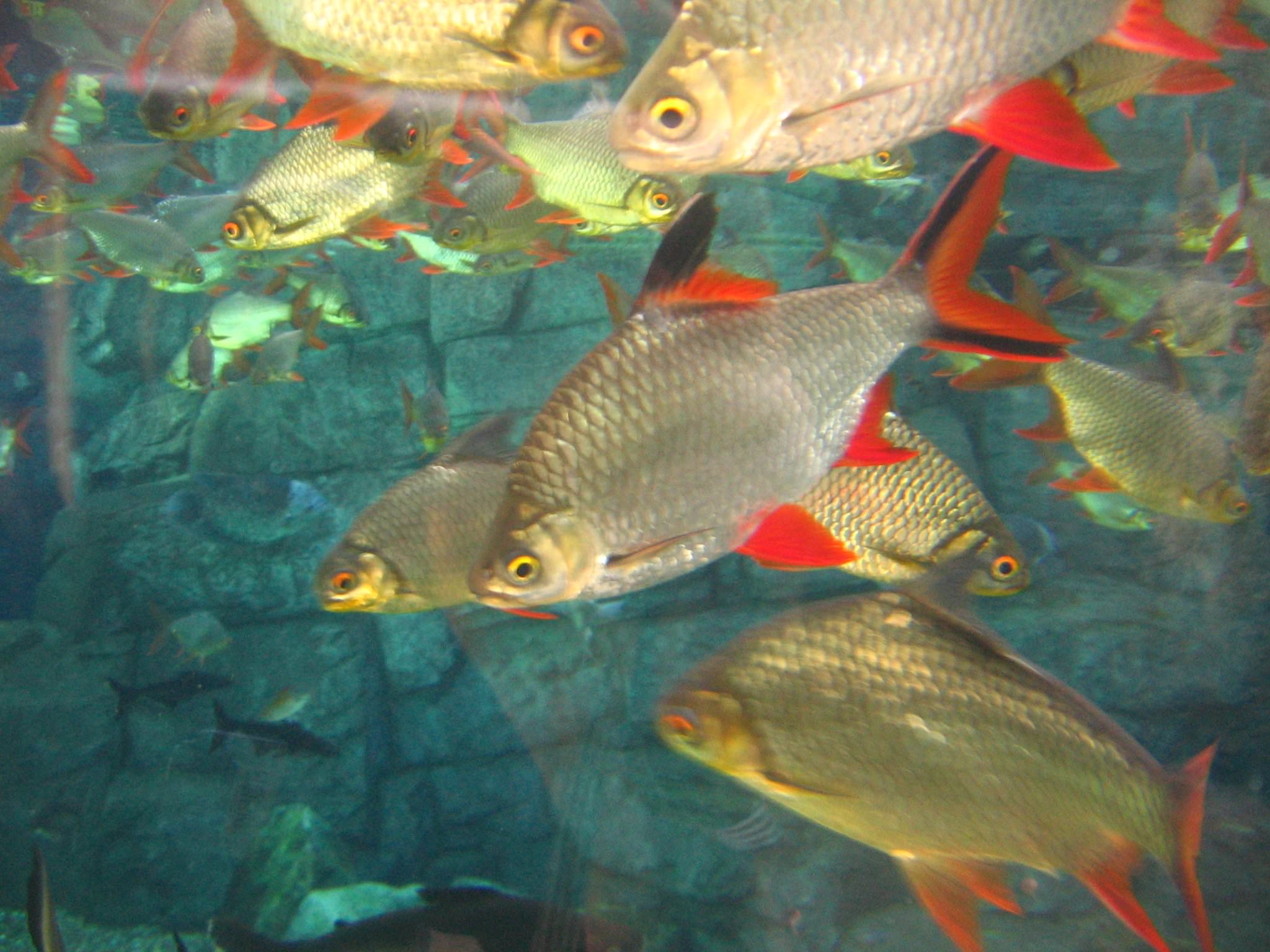
The first thing you’ll notice about this species is their unique coloration. The body of the fish is a deep, metallic green. This color is broken up by a few vertical black stripes that run from the gills all the way down to the base of the tail.
The fins on this fish are also quite unique. The dorsal and anal fins are both large and triangular. They start at the midpoint of the fish and extend back quite a bit.
The caudal fin is forked and also quite large. The pectoral fins are also large and begin just behind the gill plate.
The head of the Tinfoil barb is large and flat. They have small eyes that are set quite far back on their head.
This species can grow to be quite large, up to 18 inches (45 cm) in length!
Lifespan
In the wild, tinfoil barbs only live for around 3 years. However, in captivity, they can live for up to 7 years with proper care.
As with most fish, there are a number of factors that can impact a tinfoil barb’s lifespan. Things like water quality, stress from bad tank mates, or a suboptimal diet can all lead to a shorter lifespan.
Size
Tinfoil barbs can reach lengths of up to 20 inches, but are more commonly around 12 inches long. They are a fast-growing fish, so expect them to reach their full size within a year or two.
Tank
Tank Size
The minimum tank size for tinfoil barbs is 30 gallons. If you want to keep more than one fish, you should add at least 10 gallons for each additional fish.
While 30 gallons is the minimum, we recommend going with a larger tank if you can. These fish are active swimmers and will appreciate the extra space to move around.
Water Parameters
The tinfoil barb is a tropical fish that requires warm water to thrive. They’re native to Southeast Asia where the temperature hovers around 80 degrees Fahrenheit.
You’ll need to maintain similar water conditions in the aquarium if you want your fish to stay healthy. That means using a heater to keep the water temperature stable.
The tinfoil barb is also a bit more sensitive to water quality than some other fish. Ammonia and nitrites should always be at 0 ppm. Nitrates should be kept as low as possible.
A 20% water change should be done every week or two.
- Water temperature: 75 to 80 degrees Fahrenheit
- pH levels: 6.5 to 7.5
- Water hardness: 4 to 15 dGH
- Alkalinity Levels: 3-8 dKH
What To Put In Their Tank
Tinfoil barbs are a schooling fish, which means they do best in groups. We recommend at least 6 of them, but more is always better.
When it comes to decorating their tank, you have a few different options.
One option is to go with a more natural look. This can be accomplished by using plants and driftwood to create hiding spots and places for them to explore.
If you want to go with a more classical look, then you can use rocks and caves. This is the route we recommend since it provides the most hiding spots for these fish.
The most important thing is to provide plenty of places for them to hide. Tinfoil barbs are a timid fish and will be easily stressed out if they don’t feel safe.
The substrate is another important consideration. These fish love to dig, so you’ll want to use something soft like sand.
Common Diseases
The most common disease that affects tinfoil barbs is called Hole in the Head disease. This is a condition that is caused by poor water quality and the presence of activated carbon in the tank.
This disease will present itself as one or two pits/holes in the skin of your fish’s head. While it’s almost always curable (fixing your water quality and removing activated carbon is usually all you need to do), it will usually leave some scarring on your poor fish!
The other disease you’ll want to keep an eye out for is ich. This is obviously not a tinfoil barb-specific illness, but since ich is so common it’s definitely worth mentioning here.
This will show itself as white spots on the body, fish, and gills of your fish. We won’t do a full ich treatment guide here (there are plenty of those online) but it’s something you need to take very seriously if it affects your tinfoil barb.
Behavior & Temperament
Tinfoil barbs are schooling fish, so they do best in groups of six or more. That being said, they can be a bit nippy towards other fish. So, it’s important to choose tank mates that can hold their own.
Tinfoil barbs are also known to be a bit finicky when it comes to food. They may not eat right away, but they eventually will. Just be patient.
These fish are relatively active, so they need a tank that can accommodate their swimming habits. A 30-gallon tank is the minimum size you should consider.
All in all, tinfoil barbs are peaceful fish. They’re not known to be aggressive, but they may nip at the fins of their tank mates if they’re not careful.
Tank Mates
The care requirements for tinfoil barbs are not particularly demanding. In fact, these fish are quite adaptable.
This makes them an ideal choice for the beginner aquarist.
Tinfoil barbs are also peaceful fish. They’re not known to be fin nippers or harass other species.
That said, they are active swimmers. As a result, they need a bit more space than your average community fish.
Tinfoil barbs are best kept in a group of at least six. This will help them feel more comfortable in their environment.
When it comes to choosing tinfoil barb tank mates, there are a few things to keep in mind.
First, these fish need to be with other peaceful species. They’re not aggressive, so they can’t hold their own against more boisterous tank mates.
Second, tinfoil barbs like to swim in open water. This means that tank mates that stay close to the bottom of the tank are a good choice.
Finally, tinfoil barbs come from warm waters. As a result, they need to be kept in a tropical aquarium.
With all of that in mind, here are some compatible tinfoil barb tank mates:
- Neon Tetra
- Guppy
- Platy
- Swordtail
- Mollies
- Endler’s Livebearers
- Corydoras Catfish
- Bristlenose Pleco
Breeding
The tinfoil barb is a beautiful fish that can be difficult to breed. They are native to fast-moving rivers and streams in Southeast Asia. In the wild, they lay their eggs on plants that are submerged in water. The eggs hatch in about 24 hours.
To breed tinfoil barbs in captivity, you will need to set up a breeding tank. The tank should be at least 20 gallons and have a lot of plants. Tinfoil barbs like to lay their eggs on plants, so the more plants you have, the better. You should also have a sponge filter to keep the water clean.
The water should be well-oxygenated and have a temperature of 77-86 degrees Fahrenheit. The pH should be 6.5-7.0.
To trigger spawning, you can do a large water change or add some peat to the water. Once the female tinfoil barb is ready to lay her eggs, she will attach them to the plants. The male tinfoil barb will then fertilize them.
The eggs will hatch in 24 hours. The fry will be very small and need to be fed microscopic food for the first few weeks. After that, you can start feeding them baby brine shrimp.
Conclusion
The Tinfoil barb is a great fish for beginner and experienced aquarists alike. They’re a hardy fish that can tolerate a wide range of water conditions, which makes them very easy to care for.
They’re also a beautiful fish that will add a lot of visual interest to your tank.
If you’re looking for a fish that’s easy to care for but still has a lot to offer, the Tinfoil barb is a great choice.

